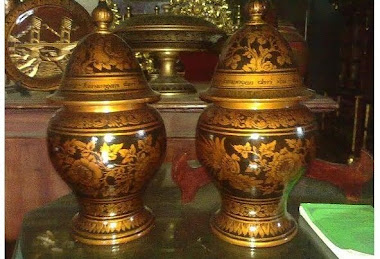Duku Fruits
Lansium
domesticum, also
known as langsat or lanzones, is a species of tree in the family Meliaceae. The plant, which originates from western Southeast
Asia, bears edible fruit. It is the provincial
flower for the Indonesian province of South
Sumatra. The
tree is average sized, reaching 30 metres (98 ft) in height and 75
centimetres (30 in) in diameter. The trunk grows in an irregular manner,
with its buttress
roots showing above ground. The
tree's bark is a greyish colour, with light and dark spots. Its resin is thick
and milk coloured.
The pinnately compound leaves are odd numbered, with thin hair, and
6 to 9 buds at intervals. The buds are long and elliptical, approximately 9 to
21 centimetres (3.5 to 8.3 in) by 5 to 10 centimetres (2.0 to 3.9 in) in size.
The upper edge shines, and the leaves themselves have pointed bases and tips.
The stems of the buds measure 5 to 12 millimetres (0.20 to 0.47 in)
The flowers are located in inflorescences that grow and hang from large branches or the trunk; the bunches may number up to 5 in one place. They are often branched at their base, measure 10 to 30 centimetres (3.9 to 12 in) in size, and have short fur.[2] The flowers are small, with short stems, and have two genders. The sheathe is shaped like a five lobed cup and is coloured a greenish-yellow. The corona is egg-shaped and hard, measuring 2 to 3 millimetres (0.079 to 0.12 in) by 4 to 5 millimetres (0.16 to 0.20 in). There is one stamen, measuring 2 millimetres (0.079 in) in length. The top of the stamen is round. The pistil is short and thick.[1]
The fruit is can be elliptical, oval, or
round, measuring 2 to 7 centimetres (0.79 to 2.8 in) by 1.5 to 5 centimetres
(0.59 to 2.0 in) in size. It is covered by thin, yellow hair and a sheathe of
leaves that do not fall off. The skin of the fruit is think, approximately 6
millimetres (0.24 in). The fruit contains 1 to 3 seeds, flat, and bitter
tasting; the seeds are covered with a thick, clear-white aril that
is tastes sweet and sour.[1] The sweet juicy flesh contains sucrose, fructose, and glucose.[3] For consumption, cultivars with small or undeveloped
seeds and thick aril are preferred. Peak season:
July to September
to many foreign fruit lovers, but Thais are very fond of its smoky white flesh and look forward to the fruits annual appearance between July and October. The taste is sweet and at the same time slightly sour. One must be careful not to bite into the bitter seed. The main growing zones are the lower north, the east, and the south.
The oval-shaped Langsat is native to Thailand. Peel back the light yellowish-brown skin to expose small, plump segments of translucent flesh. Some contain seeds. Perfectly ripened plump Langsat have a delicate refreshing sweet-and-sour taste and a fragrant aroma. Very young Langsat tend to be very sour. It is grown in Utaradit Province in Northern Thailand, Nakhon Si Thammarat, Surat Thani, Chumphon, Trang and Songkhla in the south.
Varieties
The skin of young fruit is green, and it turns yellow when it is ripe. Its thin skin contains milky and sticky sap. The flesh is Smokey white and the seed is green. Be aware not to bite the seed because it is bitter.
The taste sweet and slightly sour
Lang-Sat
Similar to the colour of Longkong, yellow when it is ripe.
Generally the bunch is crowded, the skin is thicker than the Longkongs, there is small amount of skin sap and it is not sticky.The Taste is sweet and fragrant
Preparation and eating
1.
Press
lightly with your fingers to break and open the skin at the stalk point.
2.
Separate
the fruit into two pieces.
3.
Take
the flesh out and it is ready for eating.
Nutritional value
High phosphorus and vitamin B
High phosphorus and vitamin B
Fruiting season
July - October
July - October
Uses
Eating fresh
Eating fresh
Storage
The fresh fruit can be stored in the refrigerator for 4-5 days.
The fresh fruit can be stored in the refrigerator for 4-5 days.





